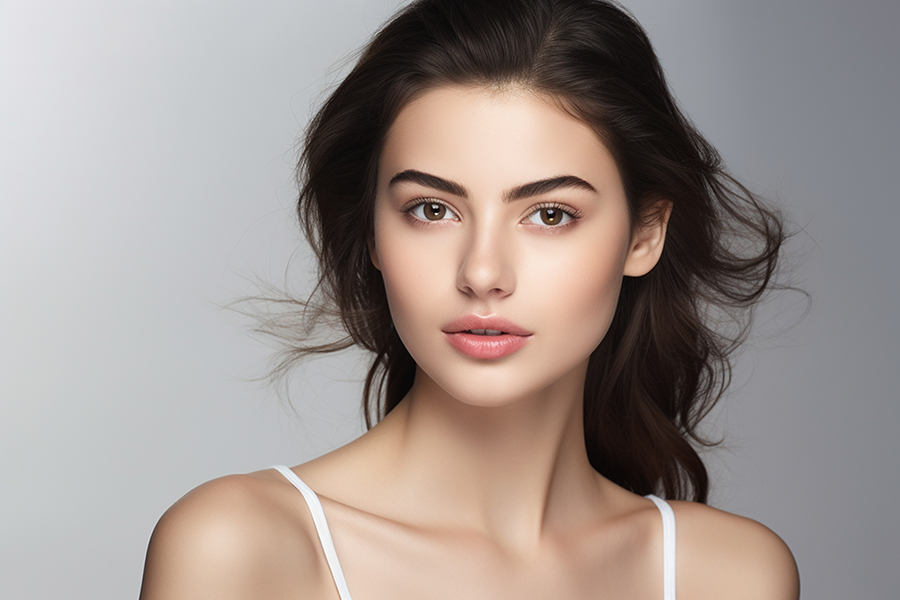Cosmetic facial fillers are a fast, non-invasive way to get youthful-looking results without surgery — and at a fraction of the cost. They are used to fill lines and wrinkles, add volume, and lift sagging areas. Results are visible immediately and typically last anywhere from 3 months to 2 years, depending on the product and the location of the injection.
Fillers are great for lifting and plumping the areas around cheeks, chins, jawlines, and temples; filling out thin lips; and even improving sagging or hollow hands. Unlike Botox, a neuromodulator which relaxes the muscles, injectable fillers actually fill the area under the trouble spot.
Fillers are fast and easy, but as with any cosmetic procedure, there are potential downsides. All fillers have a very small risk of allergic reaction and can cause irregularities or nodules under the skin. Additionally, fillers can sometimes cause a bluish discoloration called the Tyndall effect, which can last for several months. In very rare cases, improper use can cause skin cells to die or other serious complications, which is why it’s vital to always consult with a board-certified physician injector specializing in facial aesthetics.
Of course, not every filler is right for every wrinkle, and the best way to minimize risk and maximize results is choosing the right filler for the problem and ensuring that it’s used correctly. But let’s look at the different types of fillers available.
Hyaluronic Acid Fillers
Hyaluronic acid (HA) is a substance naturally found in the human body, mostly in the eyes and joints, but also in the soft tissues of the face. It acts as a cushion and lubricant in the body. These are also the most popular types of fillers and include brand names like Juvederm, Voluma, and Restylane.
These fillers can last from a few months up to a few years depending on the patient. My experience also suggests that repeated injections can help stimulate the body’s own production of collagen, with the result that you need fewer injections over time. HA fillers are extremely popular, and for good reason. They are extremely versatile, long-lasting, provide beautiful results, and are reversible if needed.
Synthetic Fillers
Synthetic wrinkle fillers refer to the fact that these are made from substances that don’t occur naturally in the skin. The benefits of synthetic fillers are that they tend to produce long-lasting effects; however they are also slightly more likely to cause side effects. And most importantly, when not used correctly by a skilled injector, they can cause problems that can be difficult to correct.
Synthetic fillers include products like silicone, Bellafill, Radiesse, and Sculptra.
We currently use two of these products that work quite well: Radiesse and Sculptra. Radiesse is made of calcium hydroxylapetite (similar to bone matrix but ground into a very fine powder and suspended in a gel form). Sculptra is made of Poly-L-Lactic Acid (PLLA). PLLA is very similar to absorbable suture material like Vicryl, which is broken down and absorbed by the body. The body then responds by building its own collagen in the area of the injection. While these products do not have some of the advantages of hyaluronic acid products, they do have the advantage of being very cost-effective.
Collagen Fillers
Collagen wrinkle fillers were the first form of injectable fillers available, but the old versions didn’t last very long and also had a high rate of allergic reactions.
New ways of processing the collagen and synthetic collagen have lowered the risks, but these concerns still persist. Collagen fillers usually don’t last as long as other types.
Brands of collagen wrinkle fillers include Cosmoderm, Evolence, Fibrel, Zyderm and Zyplast.
Other common questions about wrinkle fillers
Do injectables hurt?
Each patient is different when it comes to discomfort associated with any treatment, including injectables. Of course, with proper technique, you can be kept very comfortable throughout any session of injectables. There is usually some mild discomfort associated either with numbing medicines or the injection of the fillers themselves, but we work very hard to make the process as pleasant as possible.
Should I get injectables or laser resurfacing for my wrinkles?
Injectables and laser resurfacing are not mutually exclusive. If you are able to combine different techniques (such as neuromodulators, fillers, skin care, and laser resurfacing), we can see some really outstanding results! In combination with fillers, I would recommend trying the Phoenix Fractional CO2 Laser Resurfacing treatment to the full face. This can show excellent results with improvement in skin laxity, fine lines and wrinkles, dark spots, and overall skin quality.
As I mentioned above, the best way to decide which treatment is right for your specific concerns is to meet with a facial plastic surgeon who can make personalized recommendations. We would love to talk about a treatment plan for you that addresses all your concerns.
Call us at 469-362-6975 or CLICK HERE to email us and we will be in touch with you shortly to schedule your free consultation.
Matthew A. Richardson, MD
Facial Plastic and Reconstructive Surgery
Hair Restoration Surgery
Texas Facial Aesthetics

